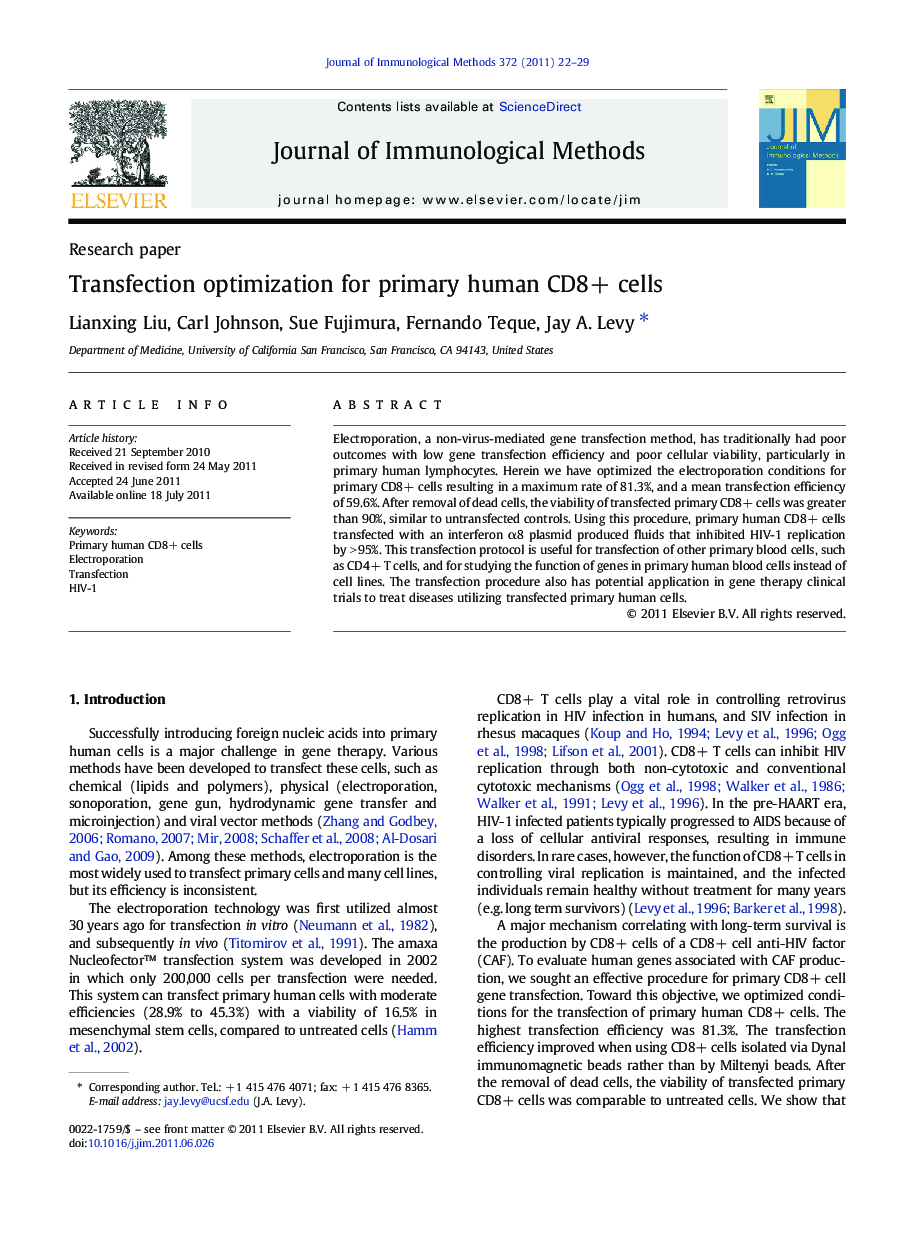| Article ID | Journal | Published Year | Pages | File Type |
|---|---|---|---|---|
| 2088421 | Journal of Immunological Methods | 2011 | 8 Pages |
Electroporation, a non-virus-mediated gene transfection method, has traditionally had poor outcomes with low gene transfection efficiency and poor cellular viability, particularly in primary human lymphocytes. Herein we have optimized the electroporation conditions for primary CD8+ cells resulting in a maximum rate of 81.3%, and a mean transfection efficiency of 59.6%. After removal of dead cells, the viability of transfected primary CD8+ cells was greater than 90%, similar to untransfected controls. Using this procedure, primary human CD8+ cells transfected with an interferon α8 plasmid produced fluids that inhibited HIV-1 replication by > 95%. This transfection protocol is useful for transfection of other primary blood cells, such as CD4+ T cells, and for studying the function of genes in primary human blood cells instead of cell lines. The transfection procedure also has potential application in gene therapy clinical trials to treat diseases utilizing transfected primary human cells.
► Established optimal conditions for gene transfection of primary human T cells. ► Demonstrated this gene transfection process produces a functional protein. ► This protocol is useful in gene therapy with lymphocytes and other blood cells.
